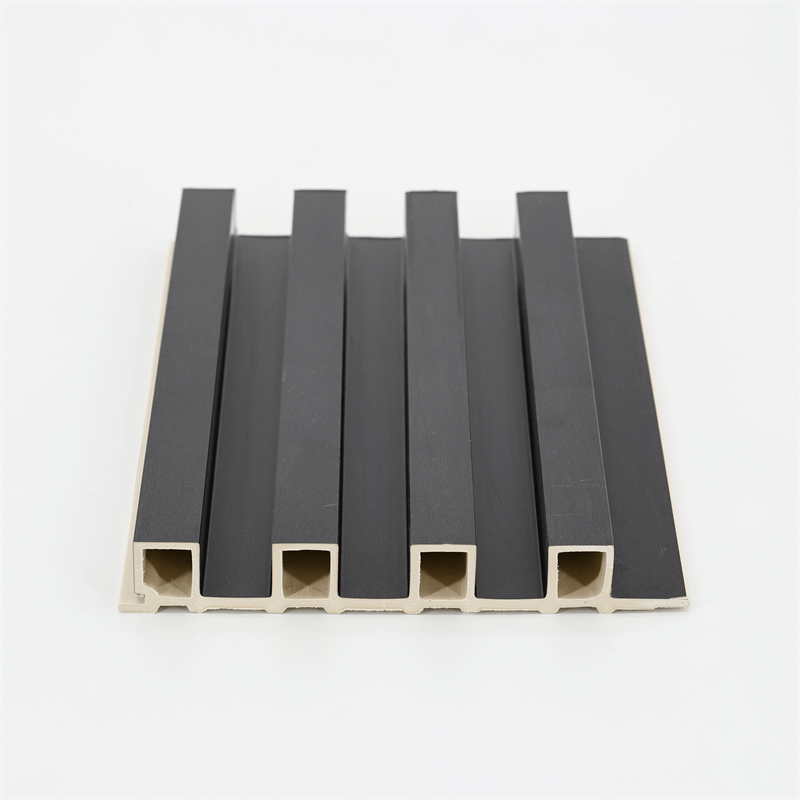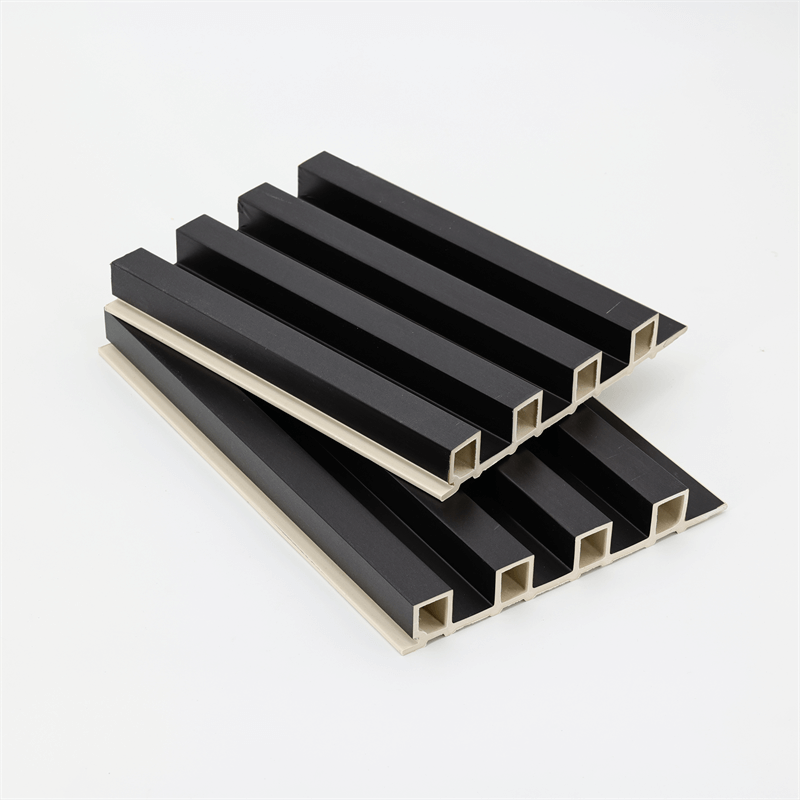In an era marked by a growing concern for the environment, sustainable design solutions have become paramount.
One such solution that has gained significant traction is the use of Wood Plastic Composite (WPC) wall panels.
These panels, made from a combination of wood fibers and recycled plastic, offer a unique blend of aesthetics, durability, and eco-friendliness.
In this essay, we will explore the concept of sustainable style and delve into the numerous benefits that WPC wall panels provide in terms of environmental conservation, resource efficiency, and design versatility.
I. Environmental Conservation: Reducing Impact
Recycled Materials: WPC wall panels are manufactured using a combination of wood fibers sourced from sustainably managed forests and recycled plastic materials.
By incorporating recycled content, these panels significantly reduce the demand for virgin materials, minimizing the strain on natural resources and decreasing waste sent to landfills.
Reduced Carbon Footprint: The production process of WPC wall panels requires less energy compared to traditional building materials.
Additionally, the use of recycled plastic diverts plastic waste from the waste stream, preventing it from polluting the environment or contributing to greenhouse gas emissions.
By utilizing recycled materials and reducing energy consumption, WPC wall panels help mitigate climate change and reduce the carbon footprint associated with construction and interior design.
Preservation of Forests: Traditional wood-based materials often rely on the extraction of timber from forests, contributing to deforestation and habitat destruction.
By utilizing wood fibers from sustainably managed forests, WPC wall panels help preserve these vital ecosystems while offering an eco-friendly alternative to solid wood products.
II. Resource Efficiency: Maximizing Material Utilization
Waste Reduction: The manufacturing process of WPC wall panels is designed to minimize waste generation.
By utilizing wood fibers and recycled plastic, the panels make efficient use of materials that would otherwise be discarded.
Moreover, offcuts and scraps from the production process can be recycled or reused, further reducing waste and promoting a circular economy.
Durability and Longevity: WPC wall panels are highly durable and long-lasting, requiring minimal maintenance.
Unlike traditional materials such as wood or plaster, these panels are resistant to rot, insects, and moisture, ensuring a prolonged lifespan.
The longevity of WPC wall panels minimizes the need for frequent replacements, thereby conserving resources and reducing waste.
Sustainable Manufacturing: The production of WPC wall panels involves energy-efficient processes and utilizes technologies that minimize resource consumption.
This includes recycling water used during production and implementing closed-loop systems to ensure efficient use of energy and resources.
III. Design Versatility: Aesthetics with a Sustainable Edge
Aesthetic Appeal: WPC wall panels offer a wide range of design possibilities, allowing for creative and visually stunning interior and exterior spaces.
These panels can be customized in terms of color, texture, and pattern, providing architects and designers with ample flexibility to achieve their desired aesthetic vision.
Natural Look and Feel: WPC wall panels can replicate the appearance of natural materials such as wood, stone, or brick, offering the beauty of these materials without the associated environmental drawbacks.
Whether it’s a rustic wooden finish or a sleek stone-like texture, the panels provide a sustainable alternative that mimics the natural aesthetics.
Seamless Integration: WPC wall panels provide a seamless and uniform look when installed, enhancing the overall visual appeal of the space.
The panels can be easily installed using interlocking systems or adhesive methods, creating a clean and cohesive design that complements various architectural styles.
IV. Health and Indoor Air Quality: A Breath of Fresh Air
Low VOC Emissions: WPC wall panels are manufactured using low-emission materials, ensuring a healthier indoor environment.
These panels do not release harmful volatile organic compounds (VOCs), which are known to contribute to air pollution and pose health risks.
By choosing WPC wall panels, occupants can enjoy better indoor air quality and a reduced risk of respiratory issues.
Mold and Moisture Resistance: The moisture-resistant properties of WPC wall panels inhibit the growth of mold and mildew, which can lead to allergies and other health problems.
The panels provide a barrier against moisture infiltration, ensuring a healthier and safer living or working environment.
Easy Maintenance: WPC wall panels require minimal maintenance and cleaning.
Unlike traditional materials that may require frequent repainting or sealing, these panels can be easily wiped or washed to maintain their appearance.
The low maintenance nature of WPC wall panels reduces the use of harsh chemicals and further contributes to a healthier indoor environment.
Sustainable style is not merely a trend but a responsible approach to design.
WPC wall panels exemplify this approach by offering an eco-friendly solution that combines aesthetics, durability, and resource efficiency.
Through the use of recycled materials, reduced environmental impact, and versatile design options, these panels enable designers and architects to create visually stunning spaces while preserving the planet.
As the demand for sustainable construction and interior design continues to rise, WPC wall panels have emerged as a viable choice for those seeking a harmonious blend of style and sustainability.
By embracing sustainable style, we can create a better future for ourselves and generations to come.
V. Market Impact: Shaping a Sustainable Future
Consumer Demand: In recent years, there has been a significant increase in consumer awareness and demand for sustainable products.
This shift in consumer behavior has prompted the construction and design industry to embrace more environmentally friendly solutions.
WPC wall panels, with their eco-friendly attributes and aesthetic appeal, have quickly gained popularity among homeowners, businesses, and architects who prioritize sustainability.
Green Building Certifications: WPC wall panels align with the principles of green building and sustainable certifications, such as LEED (Leadership in Energy and Environmental Design).
As more projects strive for green certifications, the demand for sustainable materials like WPC panels continues to grow.
By incorporating these panels into construction projects, professionals can contribute to the overall sustainability goals and enhance the marketability of their designs.
Collaboration and Innovation: The rise of WPC wall panels has encouraged collaboration and innovation within the construction and design industry.
Manufacturers, architects, and designers are continually working together to develop new techniques and technologies that maximize the environmental benefits of WPC panels.
This collaborative approach fosters a culture of sustainability and stimulates further advancements in the field.
VI. Overcoming Challenges: Education and Awareness
Misconceptions: Despite the numerous advantages of WPC wall panels, there are still misconceptions surrounding their use.
Some believe that the plastic component makes them less sustainable, but in reality, the utilization of recycled plastic contributes to resource efficiency and waste reduction.
Educating stakeholders about the true environmental benefits of WPC panels is crucial in dispelling these misconceptions.
Lifecycle Assessment: Conducting a lifecycle assessment is essential in evaluating the overall environmental impact of any product, including WPC wall panels.
This assessment considers factors such as raw material extraction, manufacturing, transportation, use, and disposal.
By conducting thorough assessments and transparently communicating the results, manufacturers and designers can ensure the continued improvement of WPC panels’ sustainability profile.
Disposal and Recycling: As with any product, the end-of-life management of WPC wall panels is a consideration.
While these panels are highly durable and have a long lifespan, eventual disposal should be handled responsibly.
Promoting recycling programs and exploring innovative recycling methods can ensure that WPC panels are given a second life or are properly disposed of to minimize their environmental impact.
WPC wall panels represent a significant step forward in sustainable design, offering an eco-friendly solution that combines aesthetics, durability, and resource efficiency.
With their positive impact on environmental conservation, resource utilization, and indoor air quality, these panels are driving the shift towards sustainable style in the construction and design industry.
As consumer demand for eco-friendly products continues to grow, the market for WPC wall panels is expanding, prompting collaboration, innovation, and greater awareness.
By overcoming challenges through education, lifecycle assessments, and responsible disposal, we can further enhance the sustainability of WPC panels.
As we embrace these eco-friendly solutions, we move closer to creating a sustainable future where style and environmental responsibility go hand in hand.



